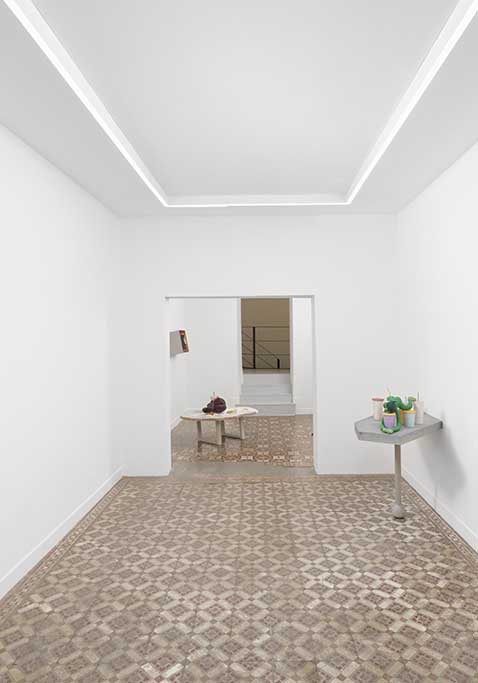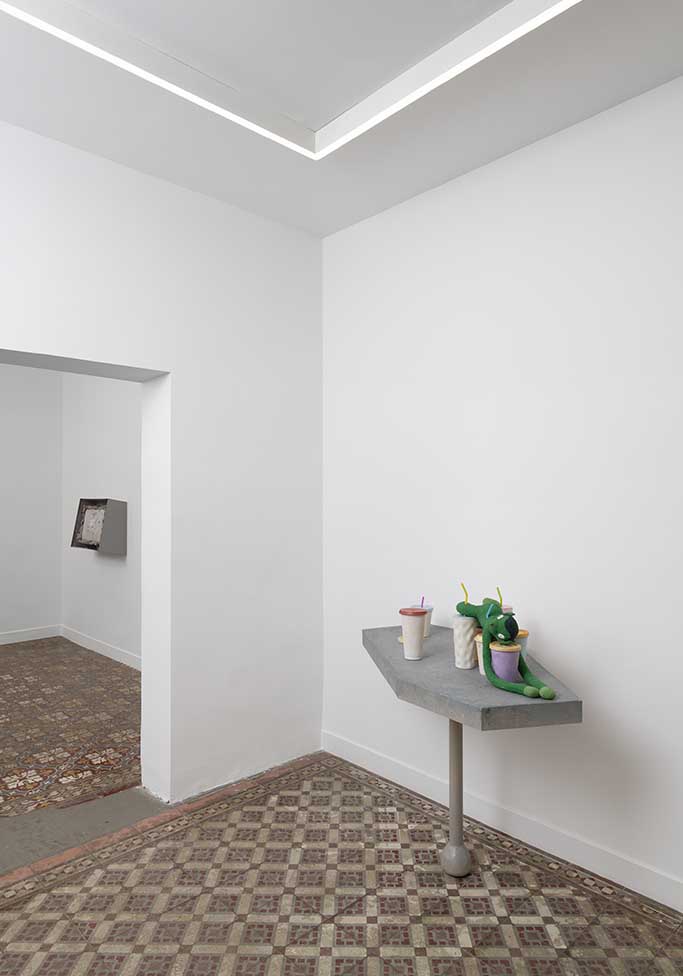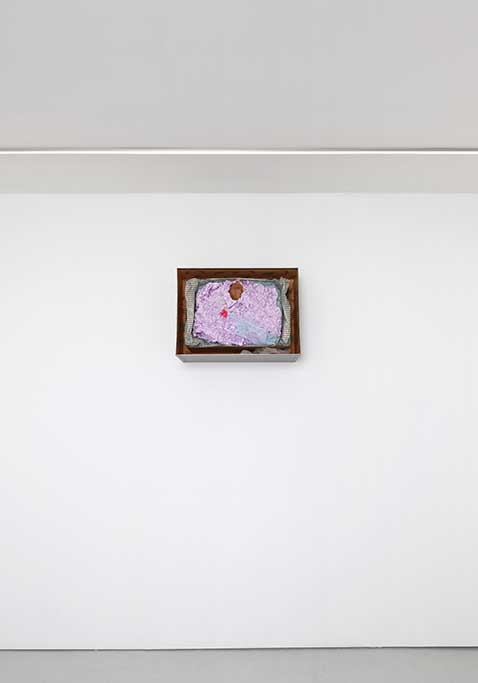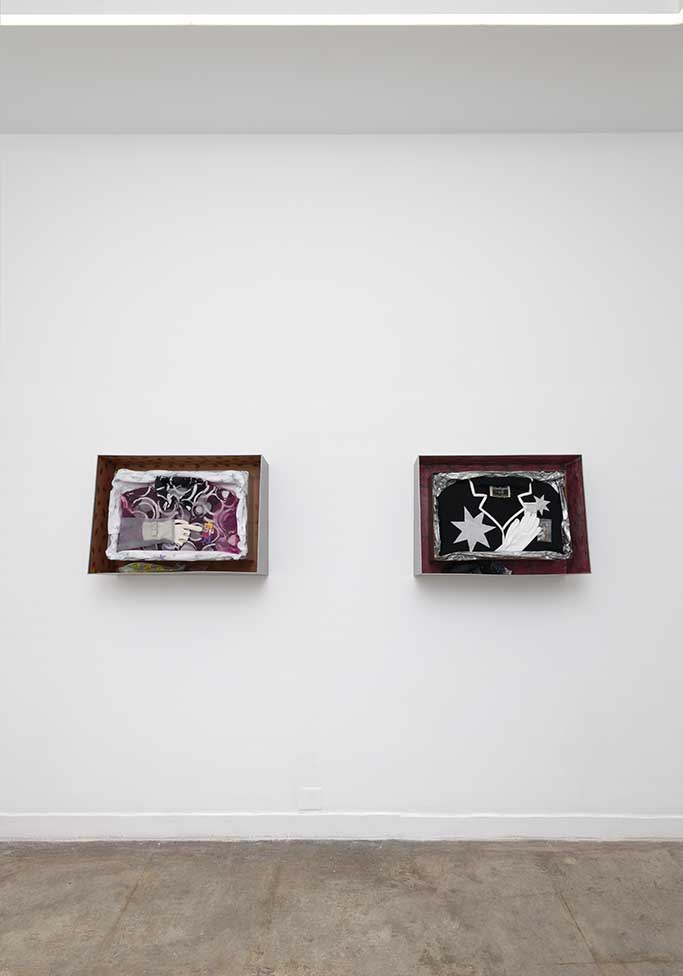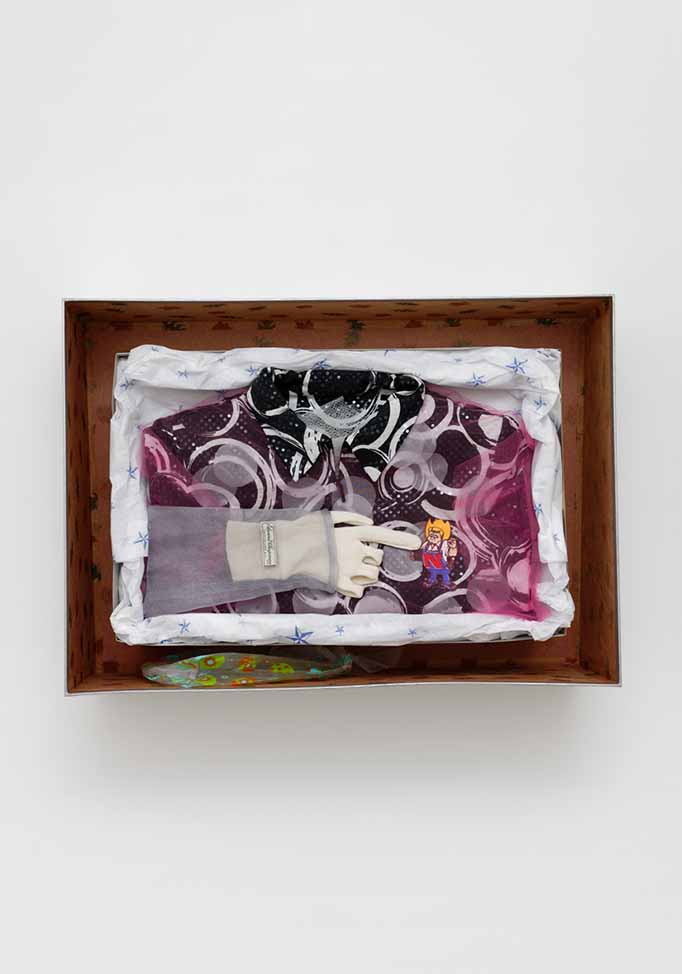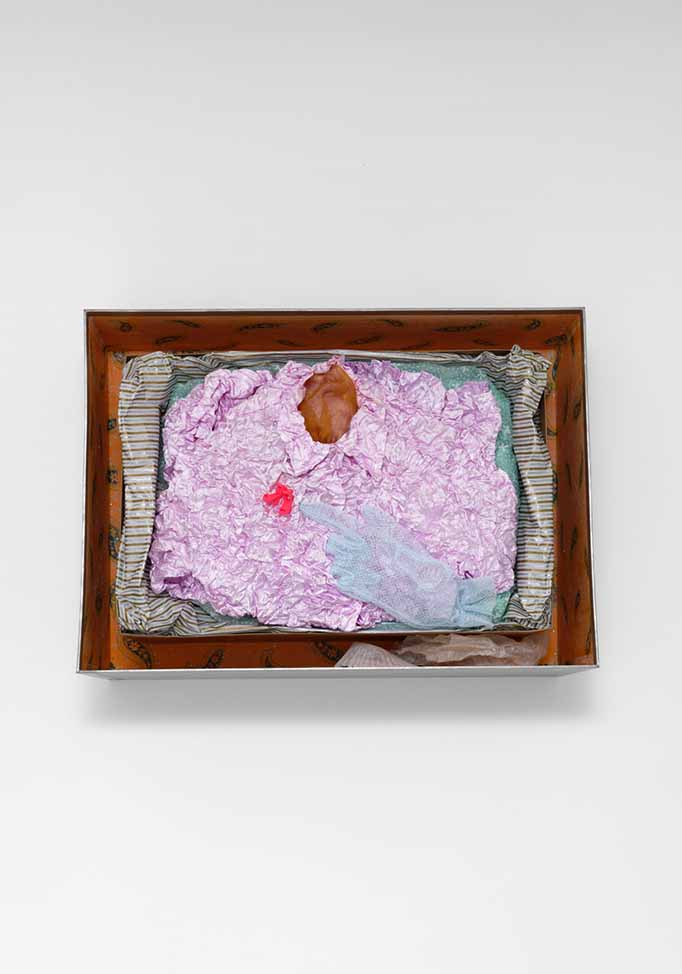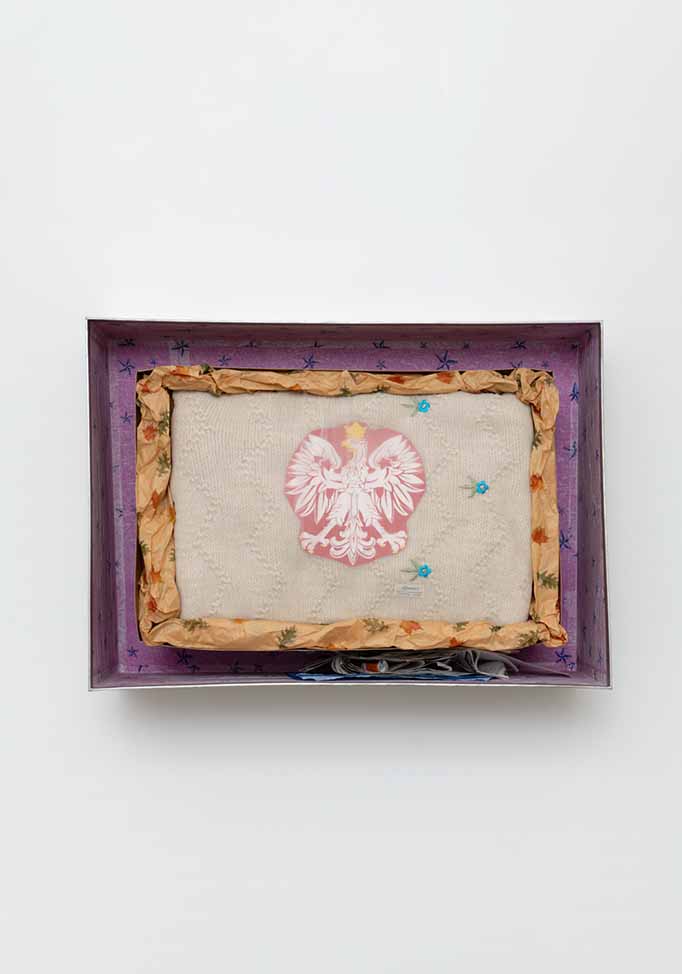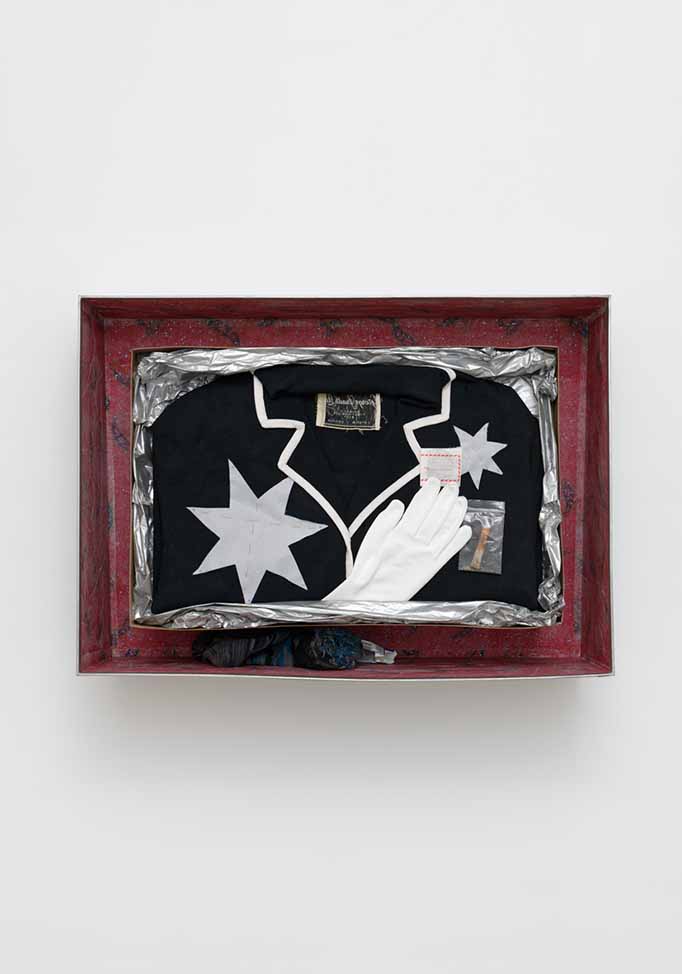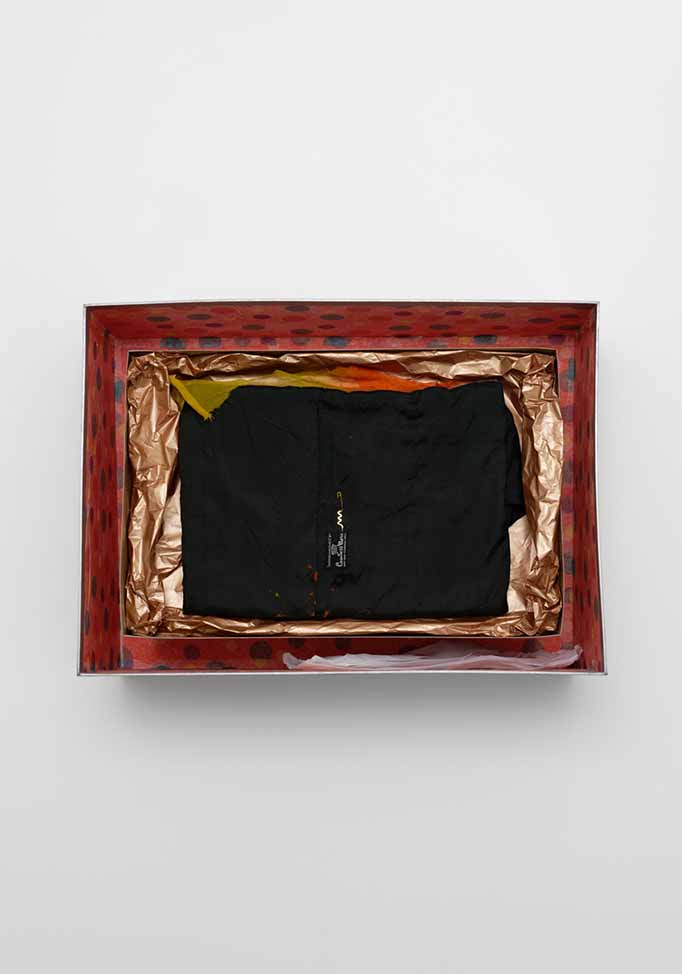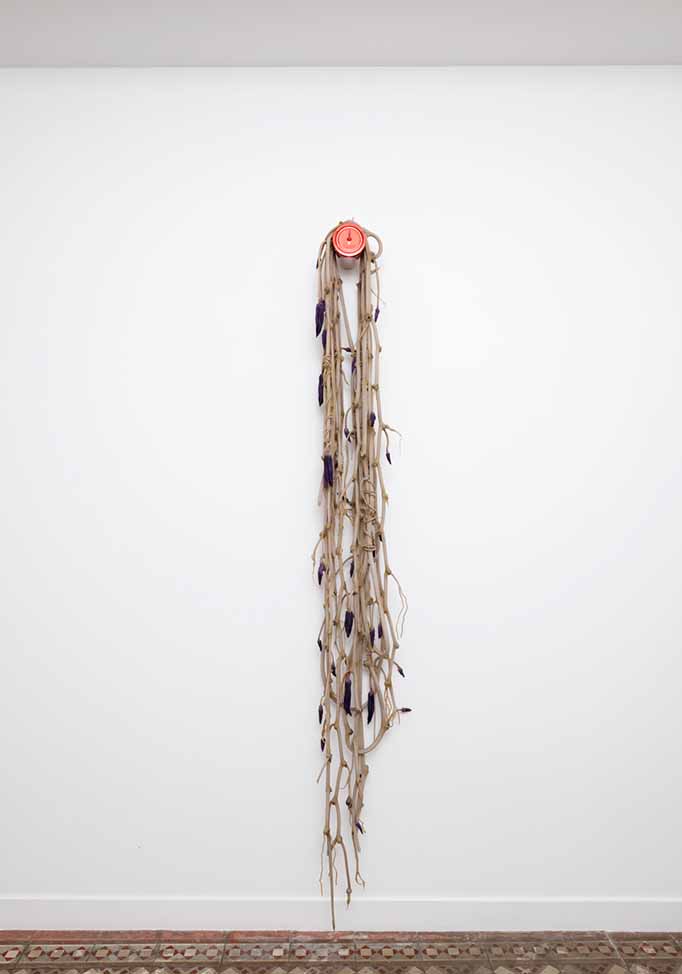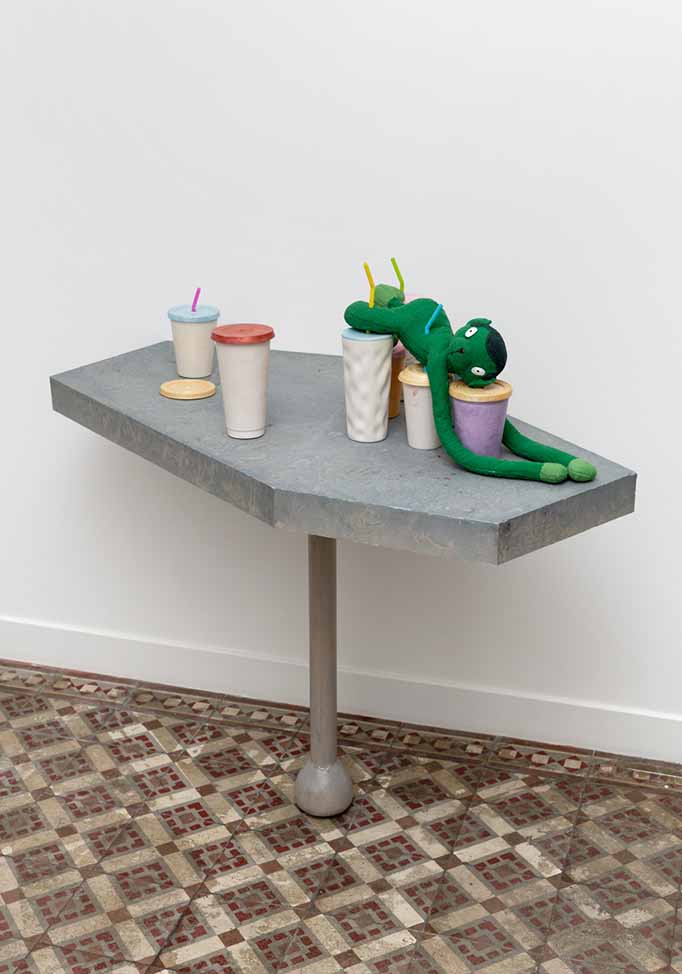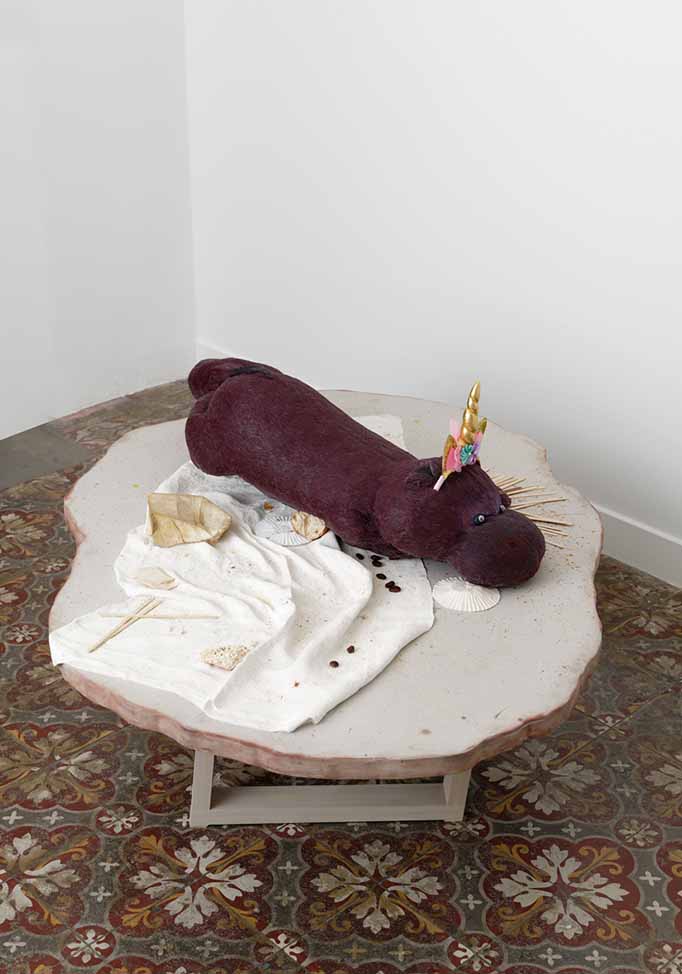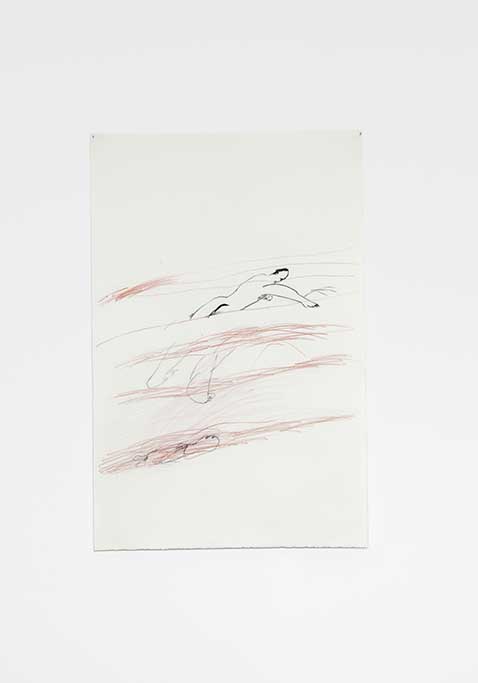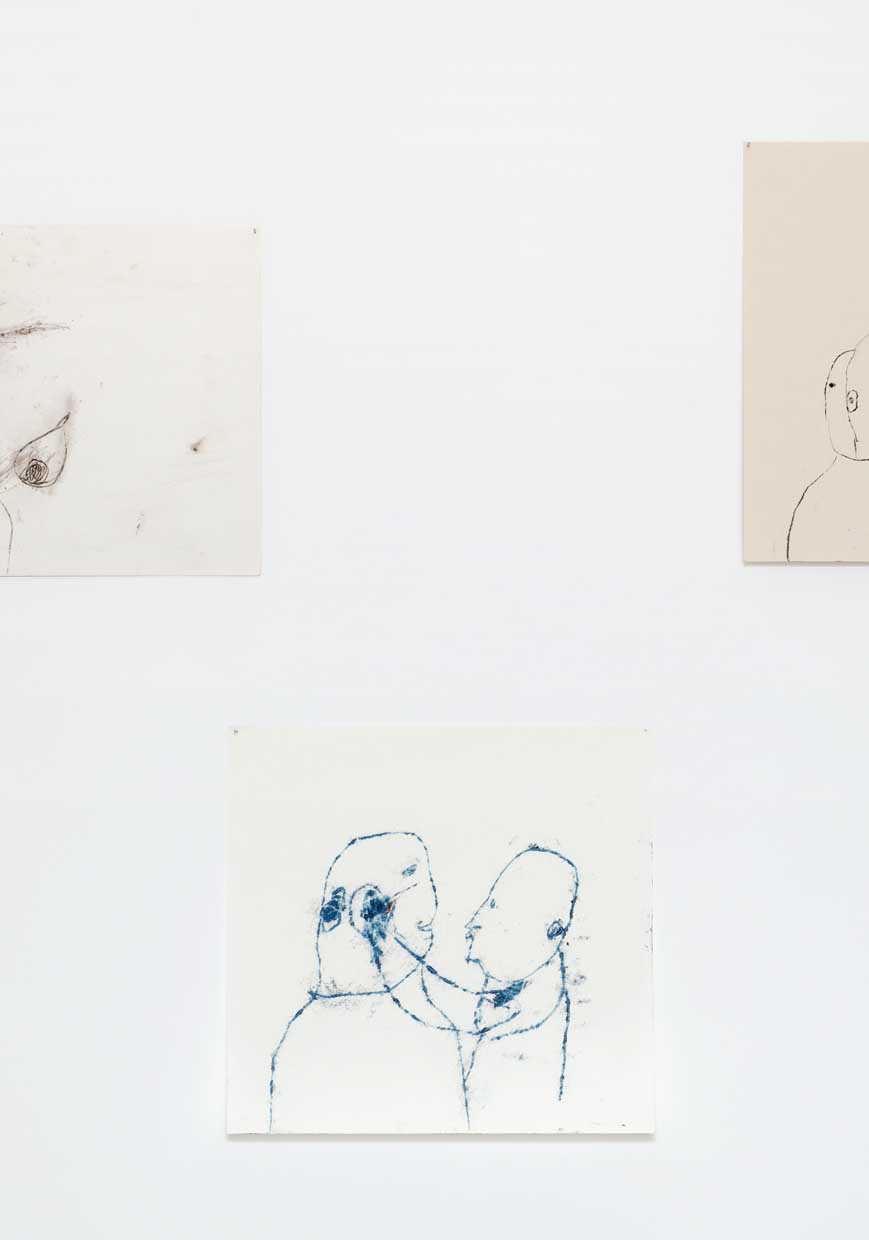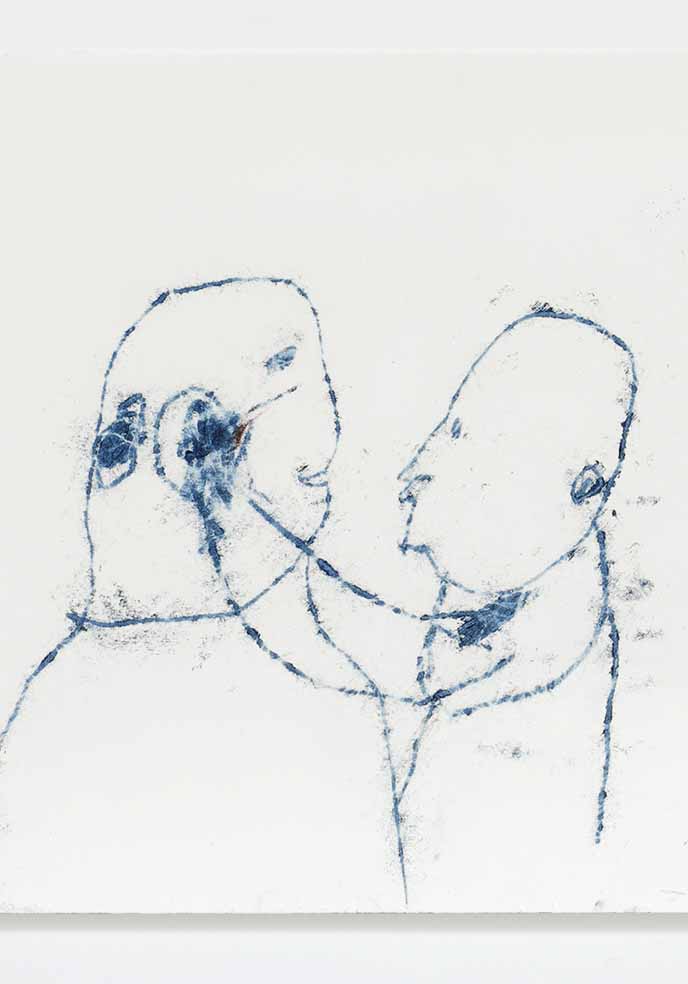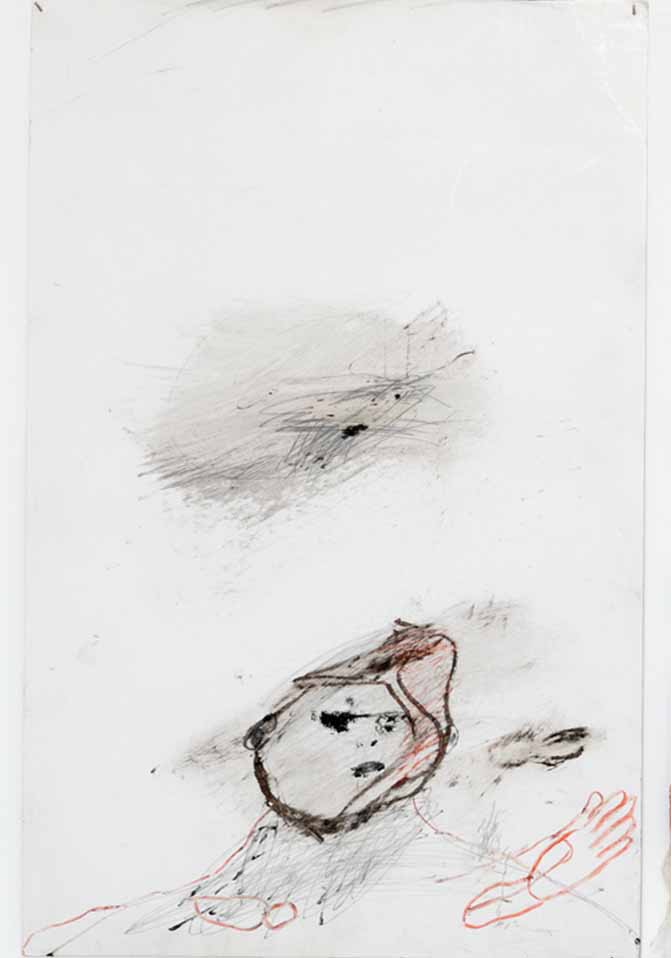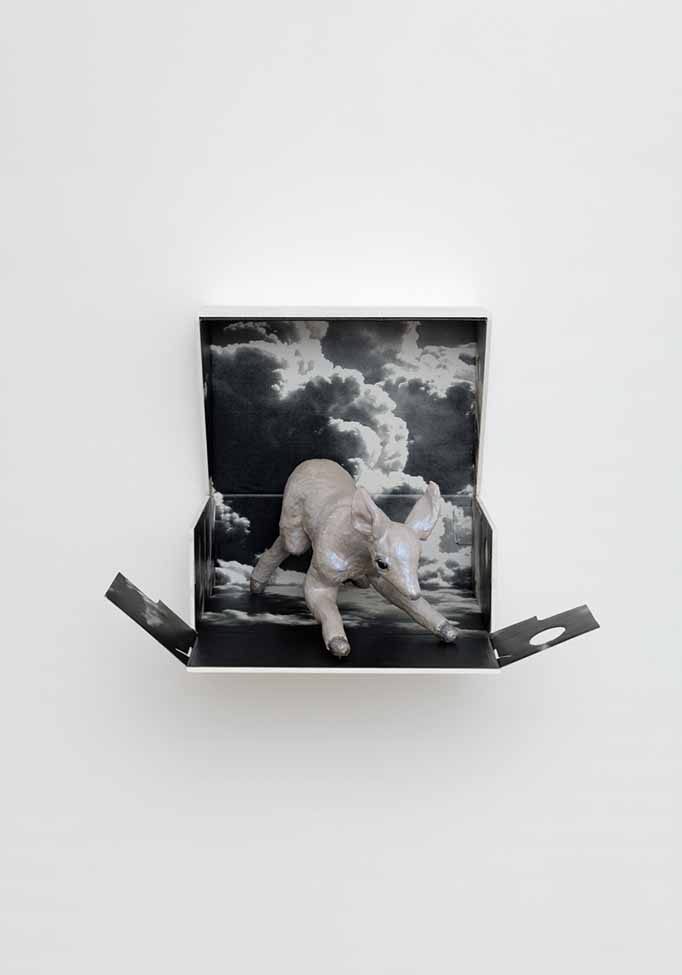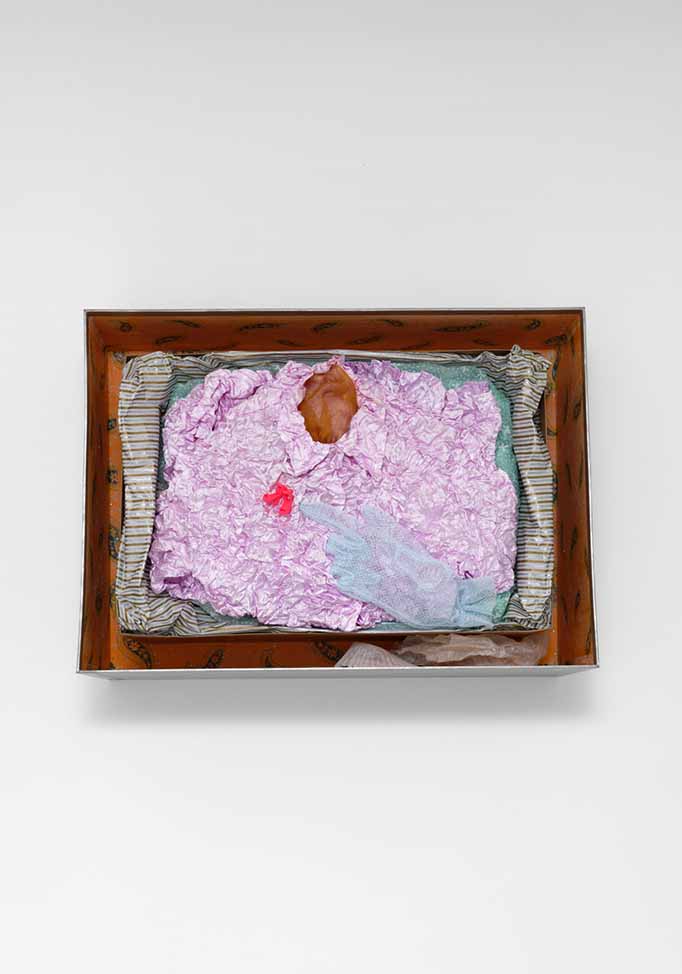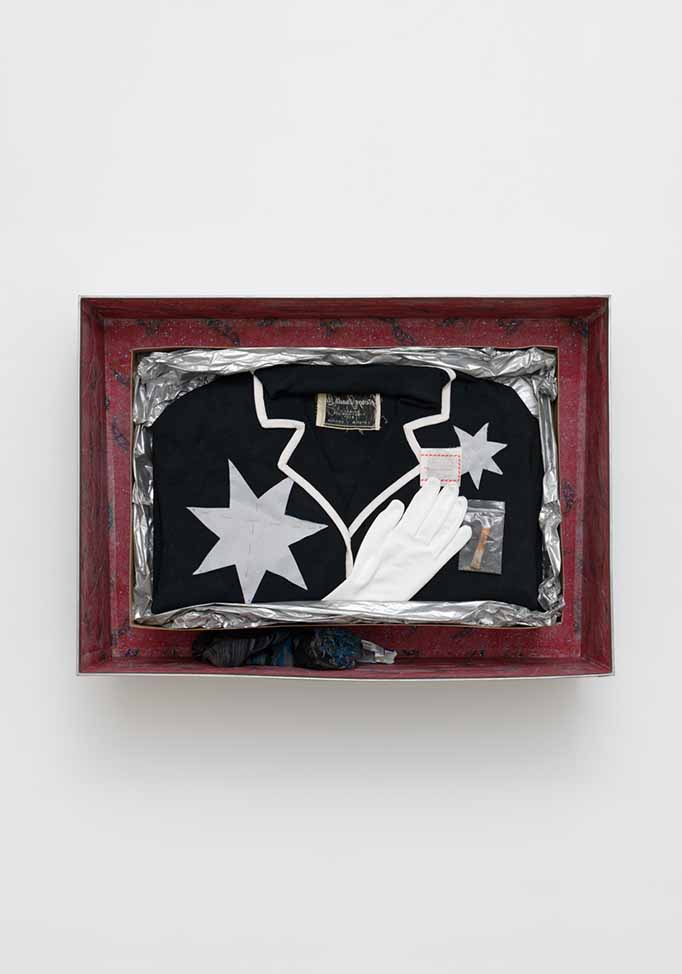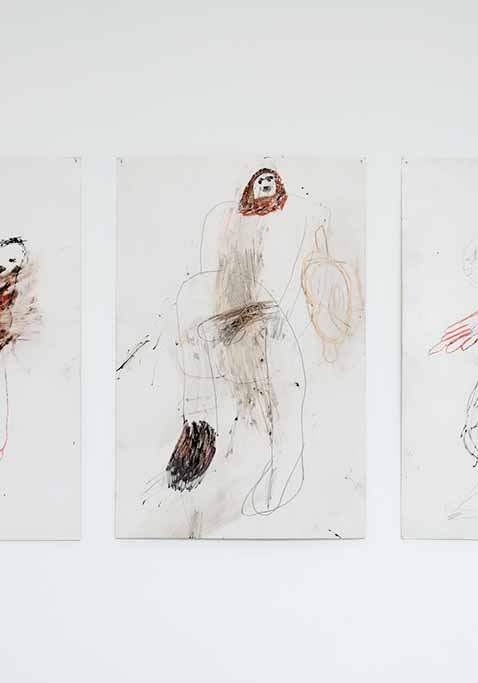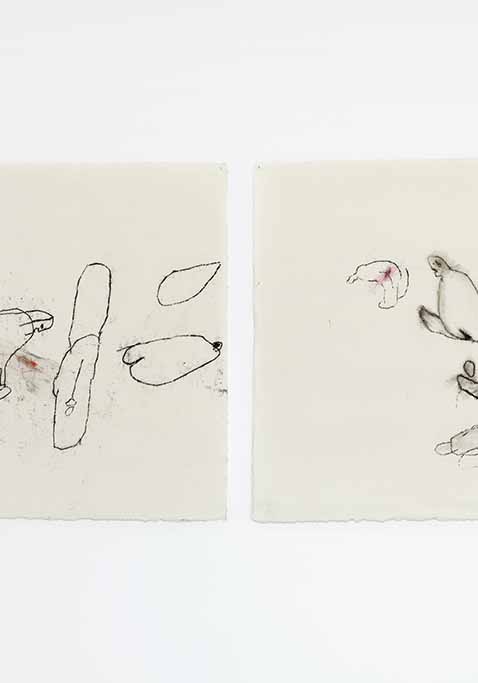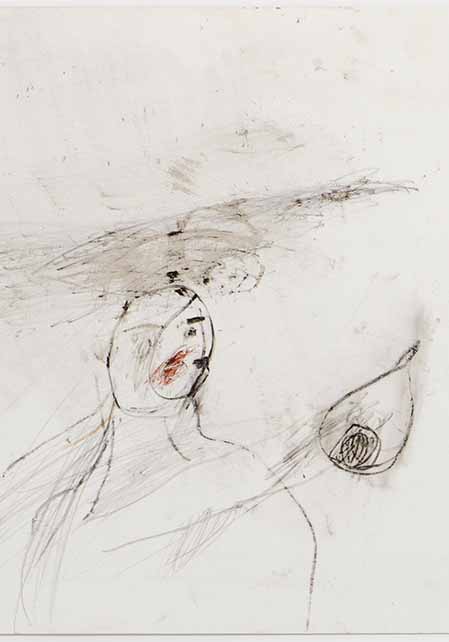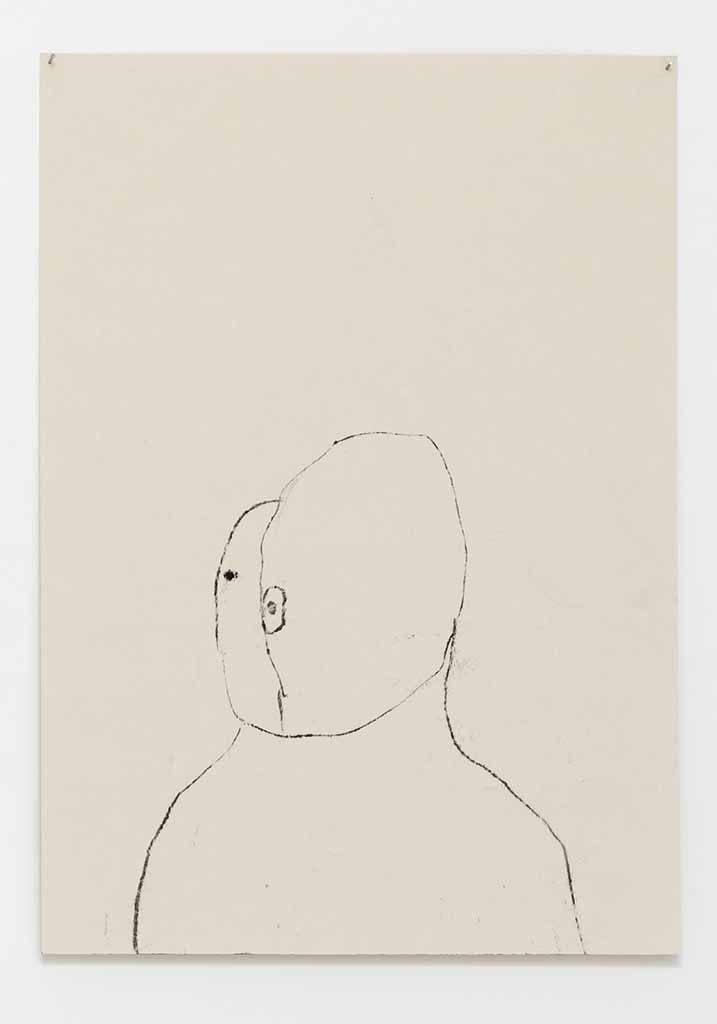
Fresh from Failure
Liz Magor
09.02.2023 - 01.04.2023, vernissage 09.02.2023
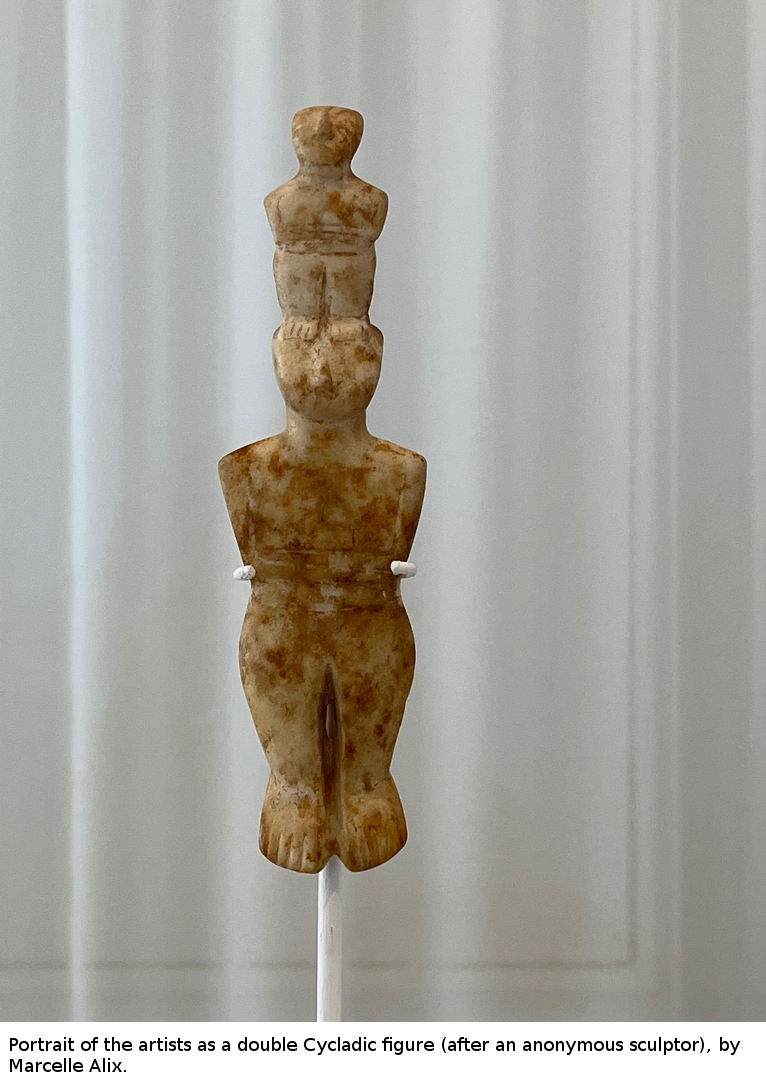
en français plus bas
"Oh, though we seem so unalike, how alike we all are under our skins?"
Excerpt from the afterword by Zadie Smith in Recitatif by Toni Morrison, published by Alfred A. Knopf, 2022
IA: The prospect of an exhibition with Liz Magor is always a celebration. Receiving the creatures that she makes in her Vancouver studio arouses in me a feeling located somewhere between the nostalgia one might experience at the sight of a familiar teddy bear long abandoned in a toy box and the impression of meeting a new full-fledged being. Liz is one of those artists who instills the same intensity, spirit and humor in every work, no matter its format or destination. They are all part of a large family of crippled, mended and cured beings which we need to cherish, at least while they are entrusted to us. Can we love a sculpture as we would love a pet we take care of? What is the role played, for the artist, by the creatures she surrounds herself with? By inviting Armineh Negahdari in the second version of our programme "Dans la chambre d'ami·e·s" ["In the Guest Room"], we wanted to extend the question to an artist whose trajectory is accompanied by small clay figurines, which seem to be extracted from a series of pencil drawings whose simplicity does not overshadow their expressiveness.
CB : Liz Magor's works are related to the experience and the purpose of the experience is, quite simply, us. Liz knows how to conceal her position as an artist in order to put herself in our position and thus conceive works that have no other wish than to be desirable and accessible at first glance. Works that are close without being immediate ? that are agentic without being forceful. This is the great finesse of the artist's processes: they travel between a precise choice of objects extracted from reality, casts and materials that are less expected in the field of sculpture and an unparalleled arrangement of disparate elements, whose ripened narrative affects an intimate part of ourselves. What we witness is the life of forms coming out of the studio with a peculiar glow ? forms that are ageless, the universal signs of a common heritage. With Liz, creating is joyful and one can only smile back at attempts to remain composed in the face of gravity ? in the face of memory spells that make us distance ourselves from objects functioning as outgrowths during childhood. Liz approaches sculpture by thinking about what she wants to see. She accompanies us with materials operating as accomplices to re-examine our common experience: the human. Her works connect us to the immutable laws that lead human beings to fully project themselves into objects in order to deposit an immediate intimacy available at any given time. Something that represents us for good or ill.
Armineh Negahdari is also endowed with the ability of never forcing anything. She first approaches words and then images, she begins with drawing, by filling notebooks with sharp lines and few colours, with imposing yet incomplete bodies. What emerges from drawing is a clay figurine that is then covered with strips of fabric coated with graphite powder, as dust would do. Armineh allows us to unite with her, from her outlines to her organs: reconciling the mind and the body using media that respond to each other and are equal. This is what becomes apparent in her and Liz's artwork ? the presence of pieces that could come from further back in time and yet no, they are very much from the present day, intact and well determined to speak of the human being through strong and lasting projections. A common project that rejects all forms of dehumanisation. There are no images without contact, no ghostly interactions or floating, impersonal and frozen expressions. The expressions of Armineh's characters are intense and fleeting. Their engraved and febrile existence is subtly supported by stains and friction that are already present on curious paper cut-outs or two-sided canvas fragments. Armineh purchases hardly anything. Instead she retrieves, as she did while studying at Beaux-Arts de Paris, failed attempts abandoned in studios? waste bins. The small figurines possess the qualities of relics. In this dateless world proposed by Armineh, the work is a powerful fetish that lives far away from the system, close to the unnameable.
IA: This double idea of the fetish and the unnameable work extends the exchanges we have had with two other sculptors we exhibit: Gyan Panchal and Jean-Charles de Quillacq. This relates to what we seek to affirm exhibition after exhibition: an artwork develops a language of its own, beyond the interpretations that we want to make of it, and the "themes" to which we try to associate it. Thus, some artists practice is immediately recognisable, not because they always do "the same thing" but because their methods, their use of materials involve our relationship to the work, which in a certain way repeats itself and allows us to develop a specific affective relation to it. Hence, we are fetishists ? not of the sculptural object itself, but of the very relationship it produces with us, of our relationship to it and of our gratitude towards the artist for having materialised this bridge.
translation: Callisto McNulty
Liz Magor was born in 1948. She lives in Vancouver (Canada). An important artist of the Canadian scene, she participated to a number of group shows at the Vancouver Art Gallery, National Art Gallery in Ottawa, Seattle Art Museum, Wattis Institute, to Documenta 8 and to the Venice Biennale. Triangle Marseille reintroduced her work in Europe in 2013 (cur. Céline Kopp) and it was subsequently shown at Crédac-contemporary art center in Ivry-sur-Seine (cur. Claire Le Restif). In 2017, her retrospective which was initiated by Musée d'Art Contemporain in Montreal toured at Migros Museum Zurich, Kunstverein in Hamburg and MAMAC in Nice. She was a resident at DAAD in Berlin in 2017-2018. Her work was presented at The Renaissance Society, Chicago and the Carpenter Center for the Visual Arts, Cambridge in 2019 and will be in 2023 the subject of solo shows at Focal Point Gallery (Southend-on-Sea, UK), The Douglas Hyde Gallery (Dublin, IR) and Fondazione Giuliani (Rome, IT). The MoCA in Toronto will present new works by her in September.
Born in Tehran (Iran) in 1994, Armineh Negahdari lives in Clermont-Ferrand (France). She received a Master's degree in painting from the University of Art and Architecture of Tehran in 2019 and a Higher National Diploma of Plastic Expression at École Supérieure d'art de Clermont-Ferrand in 2022. Since then, she has participated to the 16th edition of nopoto in Paris, and to the 28th edition of Première, at the occasion of the France-Portugal season. It included a group exhibition at Meymac art center (France) which took place from 30.10.22 to 15.01.23 and will be followed by a show at Centro de Arte Oliva in Sao Joao da Madeira from 8.04 to 16.06.23.
special thanks: Chloé Poulain, Virginia Quadjovie, Josselin Vidalenc, Fereydoun Ave, Vincent Caumon, Gyan Panchal, Marion Robin, Nathalie Roux.
"For masterpieces are not single and solitary births; they are the outcome of many years of thinking in common, of thinking by the body of the people, so that the experience of the mass is behind the single voice." Virginia Woolf, A Room of One's Own.
"La chambre d'ami·e·s" [The Guest Room] is a series of invitations imagined by Marcelle Alix as an echo to the gallery's main programming. Because it is essential for us to multiply the voices heard in the gallery, to continue to think of it as a "place of one's own" turned towards artists, we open the space to new encounters that extend the body and spirit community that was born rue Jouye-Rouve, 13 years ago.
--
"Ah, bien que nous paraissions si dissemblables, comme nous nous ressemblons tous sous notre peau..."
Zadie Smith, postface, in Toni Morrison, Récitatif, Christian Bourgois éditeur, 2022, p.97-98
IA : L'annonce d'une exposition avec Liz Magor est toujours une fête. Recevoir les créatures qu'elle façonne dans son atelier de Vancouver me fait un effet qui se situe entre la nostalgie qu'on peut ressentir à la vue d'une peluche familière longtemps abandonnée dans un coffre à jouets et l'impression de rencontrer un nouvel être à part entière. Liz est de ces artistes qui instillent la même intensité, le même esprit et le même humour dans chaque ?uvre, quel que soit son format ou sa destination. Elles font toutes partie d'une grande famille d'estropiées, de raccommodées et de soignées qu'il nous importe de chérir, du moins aussi longtemps qu'elles nous sont confiées. Peut-on aimer la sculpture comme on aimerait un animal domestique dont on aurait le soin ? Quel rôle jouent pour l'artiste, les créatures dont elle s'entoure ? En invitant Armineh Negahdari dans la deuxième mouture de notre programme « Dans la chambre d'ami·e·s », nous avons voulu étendre la question à une artiste dont le parcours est accompagné de petites figurines en terre crue, comme extraites de séries de dessins au crayon dont la simplicité n'éclipse pas l'expressivité.
CB : Les ?uvres de Liz Magor sont du côté de l'expérience et l'objet de l'expérience, c'est nous, tout simplement. Liz sait occulter sa position d'artiste pour se mettre à notre place et ainsi concevoir des ?uvres qui n'ont d'autre souhait que celui de se rendre désirables et accessibles au premier regard. Proches sans être immédiates. Agissantes sans forcer. C'est la grande finesse des processus de l'artiste qui se déplacent entre un choix précis d'objets extraits du réel, des matériaux moins attendus dans le champ de la sculpture et un arrangement inégalable d'éléments disparates, dont le récit arrivé à maturation touche à une part intime de nous-mêmes. Ce que nous voyons, c'est la vie de formes sorties de l'atelier à l'éclat particulier, des formes sans âge, les signes universels d'un héritage commun. Chez Liz, créer est une joie et on ne peut que sourire en retour à ce qui tente de garder la pose face à la gravité, face aux sortilèges de la mémoire qui nous font prendre de la distance avec des objets opérant comme des excroissances durant l'enfance. Liz travaille la sculpture en pensant à ce qu'elle a envie de voir. Elle nous accompagne avec la matière en tant que complice pour réexaminer notre expérience commune : l'humain. Avec ses ?uvres, nous sommes du côté des lois immuables qui conduisent les êtres humains à se projeter à fond dans les objets pour y déposer une intimité immédiate disponible à tout moment. Quelque chose qui nous représente en bien comme en mal. Armineh Negahdari possède elle aussi ce don de ne rien forcer. Aller d'abord vers le mot puis l'image, commencer avec le dessin, remplir des carnets avec des traits vifs et peu de couleurs, des corps imposants même si pas entiers. Faire sortir du dessin une figurine modelée en terre puis couverte de bandelettes de tissu imprégnées de poudre de graphite comme sait le faire la poussière. Armineh nous permet de nous associer à elle, de ses contours à ses organes : une réconciliation entre l'esprit et le corps par des médiums qui se répondent et s'égalent. C'est ce qui transparaît chez elle et chez Liz, la présence d'?uvres qui pourraient venir de plus loin dans le temps et pourtant non, elles sont bien d'aujourd'hui, intactes et bien décidées à parler de l'être humain par des projections fortes et durables. Un projet commun qui rejette toute déshumanisation. Pas d'image sans contact, pas d'interactions fantômes ou d'expressions flottantes, impersonnelles et figées. Les expressions des personnages d'Armineh sont intenses et fugaces, leur existence gravée et fébrile est subtilement soutenue par des tâches et des frottements déjà présents sur des papiers curieusement découpés ou des fragments de toile à deux faces. Armineh n'achète presque rien, elle récupère, comme elle le faisait au cours de ses études aux beaux-arts, les essais manqués dans les poubelles des ateliers. Les petites figurines ont tout de la relique. Dans ce monde sans date que propose Armineh, l'oeuvre est un puissant fétiche qui vit loin du système, du côté des innommables.
IA : cette double idée du fétiche et de l'innommabilité de l'?uvre poursuit les échanges que nous avons avec deux autres sculpteurs que nous exposons : Gyan Panchal et Jean-Charles de Quillacq. Cela touche à ce que nous essayons d'affirmer d'exposition en exposition : un travail artistique développe un langage qui lui est propre, au-delà des interprétations que nous voulons en faire, des « thèmes » auxquels nous essayons de l'associer. Ainsi, la pratique de certain·e·s artistes est immédiatement reconnaissable, non parce qu'ils·elles font toujours « la même chose » mais parce que leurs méthodes, leurs usages des matériaux engagent notre rapport à l'?uvre qui d'une certaine façon se répète et nous permet de développer un affect particulier avec elle. Dès lors, nous sommes des fétichistes, non pas de l'objet sculptural en lui-même, mais de ce rapport là qu'il crée avec nous, de notre relation à lui et de la reconnaissance que nous portons à l'artiste pour avoir matérialisé cette passerelle.
Liz Magor est née en 1948. Elle vit à Vancouver (Canada). Artiste importante de la scène canadienne, elle a participé à plusieurs expositions de groupe à la Vancouver Art Gallery, à la National Art Gallery à Ottawa, au Seattle Art Museum, au Wattis Institute, à Documenta 8 et à la Biennale de Venise. Triangle Marseille a ré-introduit son travail en Europe en 2013 (cur. Céline Kopp) qui fût ensuite montré au Crédac centre d'art contemporain d'Ivry-sur-Seine (cur. Claire Le Restif). En 2017, sa rétrospective, initiée par le Musée d'Art Contemporain de Montréal, a fait l'objet d'une tournée au Migros Museum Zurich, au Kunstverein à Hambourg et au MAMAC à Nice. Elle a été en résidence au DAAD à Berlin en 2017-2018. Son travail a été présenté à la Renaissance Society de Chicago et au Carpenter Center for the Visual Arts de Cambridge en 2019 et fera en 2023 l'objet d'expositions personnelles à Focal Point Gallery (Southend-on-Sea, UK), The Douglas Hyde Gallery (Dublin, IR) et la Fondazione Giuliani (Rome, IT). Le MoCA de Toronto présentera ses oeuvres les plus récentes en septembre.
Née à Téhéran (Iran) en 1994, Armineh Negahdari vit à Clermont-Ferrand. Elle obtient en 2019 un master en peinture à l'Université d'art et d'architecture de Téhéran puis en 2022 un Diplôme National Supérieur d'Expression Plastique à l'École Supérieure d'art de Clermont-Ferrand. Elle a participé à plusieurs expositions collectives notamment à Soo Contemporary gallery, Téhéran (2021), à Saatchi gallery, Londres (2018), à Satura art gallery, Gênes (2015) et à deux éditions de la Biennale Damoonfar, Théhéran (2017 et 2019).
Remerciements chaleureux à : Chloé Poulain, Virginia Quadjovie, Josselin Vidalenc, Fereydoun Ave, Vincent Caumon, Gyan Panchal, Marion Robin, Nathalie Roux
* « Car les chefs d'?uvres ne naissent pas isolés et solitaires ; ils sont le fruit de nombreuses années à penser en commun, à penser par le corps des gens, de sorte que l'expérience de la masse est derrière la voix solitaire. » Virginia Woolf, Un lieu à soi, nouvelle traduction 2020
« La chambre d'ami·e·s » est une série d'invitations imaginées par Marcelle Alix comme un écho à sa programmation principale. Parce qu'il nous tient à c?ur de multiplier les voix entendues dans la galerie, de continuer de la penser comme un "lieu à soi" tourné vers les artistes, nous ouvrons l'espace à de nouvelles rencontres qui étendent la communauté de corps et d'esprit née rue Jouye-Rouve il y a 13 ans.


